From Sea to Shining Sea:
A Film Treatment by Paul Gasek and Gene Carl Feldman
18 JULY
Apollo 11
In the afternoon, at a distance from Earth of 128,000 nautical miles and within 48,000 miles of the Moon, the Apollo 11 crew begins a transmission to Earth of scenes from inside the module and spacecraft. The world watches in fascination.
PX-15
During the first three days, the Ben Franklin makes two descents to the bottom, one to 1500 feet, and the other to 1800 feet, cruising the rest of the time at depths of between 600 and 650 feet.
Lithium hydroxide panels, which scrub carbon dioxide from the air, are changed and activated, bringing a noticeable reduction in CO2 levels. CO2 levels in the enclosure of the small submersible will remain a constant concern for the duration in the closed environment.
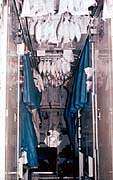
![]()
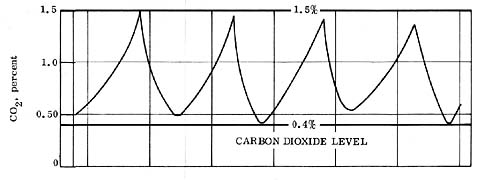
Crewmen reported seeing swarms of plankton drawn to the sub’s thallium iodide lamp. A 30 foot long medusa jellyfish and two broad billed swordfish "investigate" the submersible as it drifts at 650 feet off the coast of Florida.

![]()

![]()
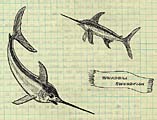
![]()

![]()

Historical: images of the Franklin and the Lunar spacecraft, interior and exterior.
Original: interviews with Scott Carpenter and Chet May.
The parallel track of the two missions is striking.
Both ships, with their delicate human crews sealed inside, are traveling through, in one case, the empty vacuum of space, and in the other, the vast expanse of the ocean. Both are very small and fragile relative to where they are, and where they’re going.
The Lunar Module is efficient and compact for space flight. At 50 feet and 140 tons the Franklin is spacious by comparison, with bunks for 6, a galley, a head with a shower, and a ward room.
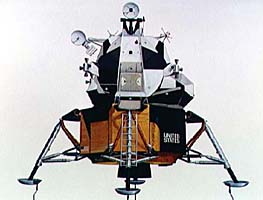
![]()
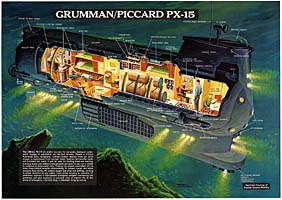
Both crews and ships travel to their destinations in darkness. But the darkness of space is illuminated by the sun and stars. The darkness of the ocean at 1800 plus feet plus, on the other hand, is quite different. It is completely dark, except when the Franklin’s battery-powered lamps shine out in the gloom.
Apollo 11 is in constant contact with Mission Control in Houston. Instruments onboard monitor virtually everything on the spacecraft and transmit data back to Earth. The Ben Franklin has an escort ship or two somewhere overhead on the surface, attempting to keep up and stay in contact - and not always succeeding.
The Apollo 11 crew has the latest in navigational and telemetry equipment with which to actively and aggressively navigate its mission. The course for the Moon is set, locked in, and the spacecraft has rocket engines to make course corrections and propel the spacecraft through the space environment to the Moon and back.
Historical: images of Franklin underwater.
Original: Piccard interview.
The Ben Franklin submersible, on the other hand, isn’t meant to travel quickly through the marine environment. Its mission is passive. Rather than powerful diesel engines, the sub has only four very light 25 horsepower electric motors mounted on the exterior of the hull for maneuverability. The Franklin’s agenda is to become a part of the marine environment, not simply pass through it like a submarine. Its course will be the Gulf Stream’s course, a meandering one, and on purpose. The mission is to observe, to sense, to become aware of the variety of forces and effects at work deep within the sea in the observable surrounds of the submersible - and bring back the data for science.
NASA: see the lunar landscape pass by
Animation: see the maritime landscape pass by; strobes flash for photography.
The LEM lunar module tracks over the rugged Moon terrain passing by a little more than 60 miles below, shooting film the whole way. The Franklin simultaneously tracks 60 feet over the rugged Continental Shelf, 1800 feet deep in the Gulf Stream, taking stereoscopic photos of the ocean bottom.
As the LEM avoids craters and other features in the lunar landscape as it comes in for landing, the Ben Franklin dodges enormous coral heads in its drift path, detected on sonar.
PREVIOUS PAGE | Page 9 | NEXT PAGE